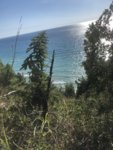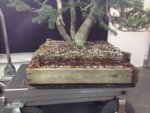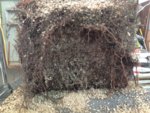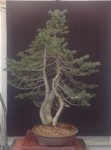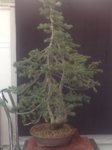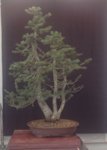Early spring before bud movement. I would not attempt something this size, it is outside my comfort zone. It has age and character but appears to be too large for my concept of Bonsai.
From a challenge perspective it appears to be a candidate for staged removal. Digging down in sections, applying fertiliser small amounts in the spring and fall. For something this size (It appears to be well over 30-40 cm in diameter at the base) i would likely plan over a two year period beginning in early spring before bud movement.Divide circumference into six pie shaped sections. Dig down at drip line in three alternating pie sections a trench 4-6 inches wide down to rock base, Cut and remove large roots encountered, fill that area back with native soil less rocks, dead roots and mix in small amount of fertilizer. Return in the first fall and apply small amounts of fertilizer between drip line and base of tree. Return in spring and dig the remaining three sections back filling as before with small amount of fertilizer mixed in. Return in the fall and fertilizer small amount between drip line and base. Return in the spring and complete the dig. Dig down just on the outside of the trench line all the way around and then undercut the root ball and sever any remaining tap roots. Call several friends, maneuver a heavy tarp under the root ball, tie tightly and secure the root ball. Lift,drag,carry, call more friends, lift drag carry, repeat.

PS: if the depth to the rock bed is over 18 inches then i would pass on the opportunity.




